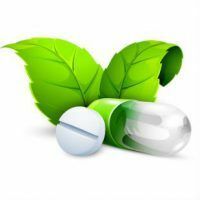
Long-term antibacterial treatment, poor-quality food, poor ecology, the effect of chemo- and radiotherapy, frequent stress, hormonal changes in the body, poisoning and other external and internal factors often lead to a violation of the balance of the intestinal microflora. As a result, active reproduction in the intestine of opportunistic microorganisms and the development of dysbacteriosis are observed. To cope with this common disease, special drugs are used that help restore intestinal microflora.
- The main drugs
- After antibiotics
- For children
- During pregnancy
The main drugs
To restore the intestinal microflora, probiotics( eubiotics) are used - preparations containing bifido- or lactobacilli in their composition. These microorganisms are found in preparations in a live, dried or specially treated condition.
All preparations of this group are natural.
They are monocomponent:
- Bifidumbacterin,
- Lactobacterin,
- Colibacterin,
- Vitaflor,
- ProbiFore,
- Bactisubtil,
- Normoflorin-L,
- Normoflorin-B.
Polycomponents:
- Lineks,
- Bifiform,
- Acylact,
- Bifikol,
- Flora Dophylus,
- Normoflorin-D,
- Polybacterin
- Narine,
- Acipol.
These include:
- Hilak-forte,
- Fervital,
- Dufalac,
- Lactusan,
- Calcium pantothenate.
Synbiotics are complex preparations of a new generation, which are inherently a symbiosis of probiotics and prebiotics.
The most popular among these preparations are:
- Biovestin-lacto,
- Maltidophilus,
- Bifidobac,
- Bifystim 1,2,3,
- Bifidumbacterin-mult 1,2,3,
- Laminolact.
The most commonly used for this purpose are:
- tetracycline,
- penicillin,
- cephalosporin,
- metronidazole.
Phytopreparations, suppressing pathogenic microflora. These include herbal teas containing:
- St. John's Wort,
- cranberries,
- calendula,
- yarrow,
- eucalyptus,
- cauliflower,
- sage,
- oregano,
- plantain.
After antibiotics
Restoration of microflora after antibiotics goes in several stages, and at the first stage, paradoxically, physicians prescribe antibacterial drugs. They are necessary for the destruction of pathogenic bacteria that multiply in the intestine as a result of taking antibiotics.
1. When multiplying in the intestine of staphylococci and enterococci,
- preparations from the group of semisynthetic penicillins( eg, amoxicillin);
- tetracycline,
- cephalosporin,
- metronidazole,
- preparations from the macrolide group( eg, oleandomycin).
2. With the active propagation of Escherichia coli, the most effective are:
- nitrofurans( antiseptics);
- derivatives of nalidixic acid;
- sulfonamides( phthalazole).
3. When propagating in the intestine of Pseudomonas aeruginosa,
- aminoglycosides( kanamycin),
- are usually prescribed. Polymyxin.
4. Candidomycosis( fungal bowel injury) is most effective:
- Lamisil,
- Amphotericin,
- Itraconazole,
- Amphotericin B,
- Mikogeptin
- Levorin,
- Nystatin,
- Ketoconazole,
- Fluconazole.
5. For antibiotic-induced dysbacteriosis, bacteriophages are also used - special preparations containing viruses that act against only one type of bacteria. Bacteriophages are prescribed together with antibiotics, and as an alternative to antibacterial treatment.
The modern pharmaceutical market offers the following bacteriophages:
- staphylococcal,
- coliprotein,
- Pseudomonasum,
- Protein.
At this stage of treatment the above described drugs are used: probiotics, prebiotics and synbiotics.
And, finally, the last stage of recovery of the body after antibiotics is the use of immunomodulators, which increase immunity and promote a faster recovery of intestinal microflora. Usually, vegetable preparations are used for this purpose, including:
- tincture of echinacea;Preparations with propolis.
- phytogens with the contents: nettle, psyllium, lemon balm, tricolor violets, coltsfoot, raspberries, turns, cowberry, currant, mountain ash, rosehip.
For children
The normal composition and functioning of the intestinal microflora in childhood is especially important, soas with prolonged dysbiosis in children, there are deviations in the development of bone, muscle and even brain tissue.
For children who are on artificial feeding, to restore the intestinal microflora will help adapted mixtures enriched with bifidobacteria and other useful microflora, such as:
- Biolact adapted,
- Baby,
- Bifidok,
- Bifilin,
- Bifilife.
In case of serious abnormalities in the functioning of the intestine, and the need to restore the baby's microflora with medical treatment, the pediatrician can prescribe probiotics that saturate the child's body with lactobacilli, in particular:
- Bifiform Baby,
- Lactobacterin,
- Primadofilus,
- Lineks,
- Lactovit Forte,
- Acylact,
- Biobakton.
Enzyme preparations, helping to restore the enzyme activity of the body. For example, Abomin is a preparation made from dried mucous membrane of calves.
to the table of contents ^In pregnancy,
In pregnancy, to restore mycosis of the intestine, probiotics are prescribed - preparations containing bifidobacteria:
- Bifidumbacterin,
- Lineks,
- Lactobacterin,
- Acipol.
Prebiotics include preparations containing lactulose:
- Dufalac,
- Normase,
- Portalac,
- Lactusan.
